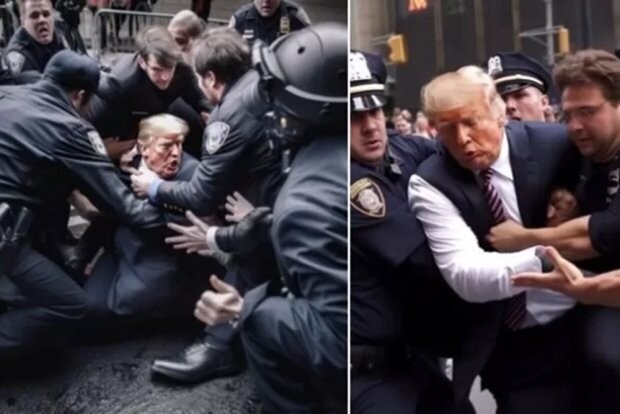Hello, this is Kotelov digital finance. Today, we’re talking about deepfakes that can tarnish the reputation of politicians and media personalities, lower company stocks, and resurrect deceased characters.
In the studio, we have Alexander Parkin, an expert in computer vision and the head of VisionLabs.
On the podcast, we’ve discussed facial recognition using biometrics and delved into the topic of deepfakes. What are deepfakes? How can you protect yourself? How are deepfakes created, and what is their architecture?
We’ve written several articles on this podcast:
- ‘How Facial Recognition Technology Helps Combat Financial Frauds?’ – you can read it here.
- ‘Deepfake: Evil or Good? Porn, Data Theft, and Trump’s Arrest’ – you’re already here.
What is a deepfake? How can you protect yourself?
Images of the Pope in Balenciaga and photos of Trump’s arrest have been circulating all over the internet. How can you tell when you’re looking at a deepfake? How can you safeguard your reputation if competitors are trying to tarnish it with deepfakes?
In short, to protect yourself, you need to train other neural networks to distinguish real images from fake ones.
The more new neural networks provide opportunities for fraud, the more new tools there will be for protection, fake recognition, and so on. This is precisely what VisionLabs is involved in.
Deepfakes can genuinely pose a danger and can be harmful in two cases:
- Slander and Reputation Damage
Deepfakes often appear among vast datasets, and people may lack the attentiveness or time to think and identify the fakes. This can significantly damage the reputation of both public figures and major government organizations
How to deal with that:
- Detect images using another specially trained neural network.
- Add labels indicating that the content is fake, as was done during the COVID-19 pandemic.
- Hacking a Personal Account
For instance, during webcam-based authentication, using a deepfake to gain access to a bank’s personal account and transfer money to another account. If there’s still a chance to rectify the situation in this scenario, what do you do when the same thing happens to a cryptocurrency wallet?
How to deal with that:
Improve and complicate the algorithms and architectures of neural networks to enable them to detect deepfakes through a webcam.
What networks and architectures are used to create deepfake content?
To put it simply, the algorithm blocks can be divided into two parts:
- Teaching the network to compress the face and then expand it again.
Compress the image of John to 16×16, and then expand it back to the original image. Take Ben’s face that you want to substitute, compress it, and then expand it onto John’s original photo.
Requirements: Many images and videos of each of the objects.
- Teaching the network to compress and alter the image in the compressed state.
Compress Ben’s photo, make changes, and then expand it using a generative neural network. This immediately results in Ben’s face on John’s body.
Requirements: Just one image of Ben.
What are the advantages of deepfake technologies?
How are the positive aspects of deepfakes used in the world?
- Porn
- Film Industry
- Game Development
- Lip Syncing
- Advertising
Why are there cases of very low-quality deepfakes in the multi-million-dollar film industry?
Scenes with Paul Walker in “Fast and Furious” or Princess Leia in the latest “Star Wars” films had substantial budgets, yet they featured subpar deepfake effects. Why?
There are several reasons:
During the filming of “Fast and Furious,” deepfake technology was still in its early stages of development, so there may not have been the capability to produce high-quality effects as we can today.
- The Uncanny Valley Effect
When the brain detects minor inaccuracies that do not align with its concept of what is normal, it can trigger a sense of unease and signal a danger. This can happen when deepfake effects are not yet realistic enough to pass as authentic, causing a sense of dissonance in the viewer.
💡 This mechanism has its roots in the times when it was crucial to determine in a fraction of a second whether something was a branch or a snake, highlighting the importance of quick recognition for survival.
How long does it typically take to create a high-quality deepfake video using modern technologies?
Around 108 hours or a million epochs
Deepfakes: Good or Evil?
We’ve discovered that deepfakes can be used to damage someone’s reputation or mislead millions of people who simply won’t notice the deception in the information flow.
On the other hand, they can be used to make films with people who are no longer alive or create incredible video content that was unimaginable in the past.
What do you think? Are deepfakes a sign of progress or an evil that needs to be banned urgently? Share your opinions in the comments and follow us on LinkedIn page if you want to get more interesting IT-news, fresh job prospects & insightful content!



